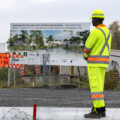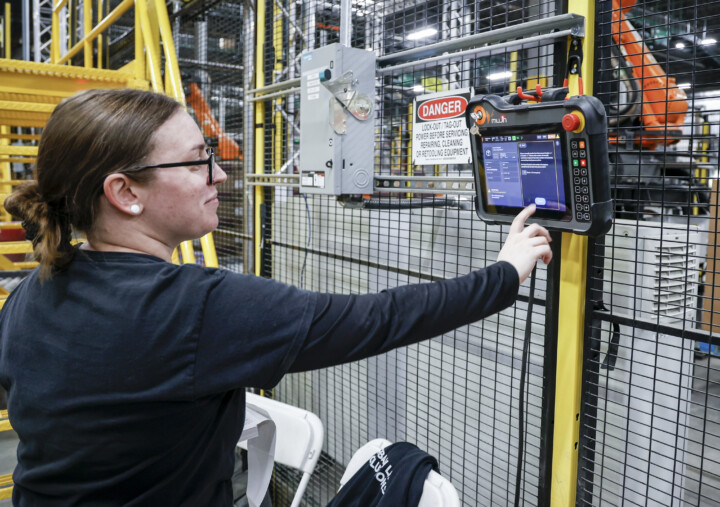Fellow Hub writer Geoff Russ recently penned a piece that examined the problems plaguing public transit construction in Canada. Too many projects are consistently coming in over budget and with big delays. Unlike in the private sector, government can’t seem to overcome a core set of problems when managing major projects. NIMBYism, project design, budget planning, and politics are all culprits.
Ottawa’s LRT has followed this trajectory. Since its launch in 2019, the Ottawa LRT has been a cursed train. Built as a first step in a multi-decade-long endeavour to better move Ottawans across a geographically vast city (you can fit the boundaries of Calgary, Edmonton, Toronto, Montreal, and Vancouver inside Ottawa’s borders) the project has been plagued with problems. Broken doors and platforms, computer glitches, wheel issues, and a derailment are just some of the many troubles the LRT has had to contend with.
Last week, Justice Hourigan released the long-awaited “Report of the Ottawa Light Rail Transit Public Inquiry”.
It was a fairly damning rebuke of a variety of management decisions that led to a failed project. Amongst its findings, the report highlights the fact that the City chose unproven technology and untested designs, there was no coherent oversight, misinformation from multiple actors, and misaligned priorities. Moreover, the report suggests that the problems are not over and ongoing issues could persist.
It’s a disheartening read for anyone in Ottawa. It’s particularly worrying given that the second phase of the LRT is currently underway, with a third in the early planning stages. Our plan to better connect our city of a million people is on shaky ground.
But the report is also disheartening in the broader context of Canadian infrastructure projects. Canada has a poor record of major project management. A number of problem-plagued projects spring to mind: The Champlain Bridge, a $35M project that has since cost over $500M in repairs and will soon have to be replaced at an even greater sum. The Phoenix Pay system and long-gun registry—both federal IT megaprojects whose budgets soared out of control. The Montreal Olympic Games, whose 720 percent cost overrun makes it the worst-managed games in the world. The B.C. fast ferries, which were built at a cost of $450M and later had to be sold for $25M after failing to effectively shepherd vehicles from Vancouver Island to the mainland. None of these are examples Canada should be particularly proud of.
Given the decades of experience Canada has had with boondoggles, you would think that we would have identified some of our common mistakes and put in place measures to prevent them.
Sadly, as evidenced by the LRT Report, this doesn’t appear to be the case.
Professor Bent Flyvberg of the University of Oxford is one of the leading researchers on failed megaprojects and how to prevent them. He also helped establish the Oxford Major Projects Leadership Academy, which trains government leaders in the U.K. on effective project management. Fortunately for us, if our governments haven’t done the work of learning from our mistakes, Professor Flyvberg has.
In a journal article from 2011, entitled “What you should know about megaprojects and why: an overview”, Flyvberg breaks down some of the common causes of megaproject failures. What is striking is how many of these common causes are mirrored in the Ottawa LRT report:
- “Decision-making, planning, and management are typically multi-actor processes involving multiple stakeholders, public and private, with conflicting interests”. Check.
- “Technology and designs are often non-standard, leading to ‘uniqueness bias’ amongst planners and managers, who tend to see their projects as singular, which impedes learning from other projects”. Check.
- Optimism bias, where costs are underestimated, is common. Check.
- There is “overexposure to so-called “black swans,” i.e., extreme events with massively negative outcomes”. Check (see big sinkhole).
- “[…] misinformation about costs, schedules, benefits, and risk is the norm throughout project development and decision-making”. Check.
The 2011 list reads like a series of omens yet to come for the LRT. Rather than avoiding them, the project fell into each and every one.

That last point about misinformation is particularly salient. It’s one of the biggest problems Flyvberg focuses on. In his research, he posits that only 1 in 1000 projects come in on time, on budget, and with the intended benefits. Often, this is because of misinformation. There is a clear thread of this occurring throughout Justice Hourigan’s report.
First, he identifies misinformation on deadlines from the project manager, which led to the City providing unrealistic expectations to the public on when the train would be operational.
And second, there was misinformation from the City executive to Council during the trial phase, which meant that Council was unable to fulfill its oversight capacity in ensuring the train would deliver on promised benefits (i.e. actually work…).
In order to prevent this, Flyvberg recommends training for planners and governments ahead of time to help them identify issues. They need to ensure that project proposals build contingencies around common issues, like black swan events, and take into account optimism and uniqueness bias. In other words, governments shouldn’t always pick the proposal that looks best on paper, but rather the ones that are realistic, thorough, and based on past evidence. Failing to do so will mean that we continue to see projects fail, further eroding public trust.
Ottawa’s LRT is one of the 999 in 1000 projects that fail because it didn’t come in on time, on budget, or with the intended benefits. Moreover, it followed the trajectory of public transit projects across Canada. In a sense, I guess we shouldn’t be surprised that we failed to buck the trend.
But we shouldn’t settle for it. We can and should do better. In his report, Justice Hourigan makes a series of recommendations to the City and Province. Many of them draw on the expert advice of researchers, like Flyvberg. In fact, in recommendation 7(a) Hourigan recommends the establishment of a Major Projects Leadership Academy here, like the one at Oxford. These recommendations, along with existing bodies of research, merit review by all levels of government.
Projects like the Ottawa LRT are essential. These megaprojects are often ways that cities can jump forward on important goals like economic growth, environmental sustainability, and social cohesion. But they need to be done well. Given the billions of taxpayer dollars at stake, we would expect our governments to use gold-standard practices. With growing research and evidence, we have the knowledge and tools we need to do better.
Time to make sure our governments use them.
Recommended for You

How Moonshot Zones could kickstart Canada’s AI-driven industrial future: Hunter Prize 2025

Literacy, reason, and childhood matter—and we’re losing all three

One key way municipalities can unlock Canada’s economic growth: Hunter Prize 2025

Nearly 24,000 patients died while on health-care waitlists in Canada last year: Report



